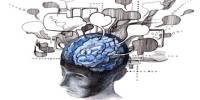Fearful situations have a bad effect on the brain. For example, war veterans frequently suffer from post-traumatic stress disorder months after the triggering incident has ended. The specific process of suppression of such fearful memories has now been discovered in a study led by the Tokyo University of Science experts.
The researchers discovered the related metabolic pathways using a mouse model, paving the way for the creation and clinical testing of therapeutic medicines like KNT-127.
Tragic occurrences such as wars, famines, earthquakes, and accidents leave us with dread memories. Even after the event has passed, these memories continue to haunt us.
Fortunately, researchers at the Tokyo University of Science (TUS) have recently been able to decipher the underlying molecular mechanisms involved in fear extinction, which is the selective suppression of frightening memories.
The researchers have now uncovered the underlying mechanism of action of the chemically manufactured substance “KNT-127,” which was previously used to demonstrate fear extinction in mice. Their research was recently published in the journal Frontiers in Behavioral Neuroscience.
Prof. Akiyoshi Saitoh, lead author of the study, and Professor at TUS, muses, “Drugs that treat fear-related diseases like anxiety and posttraumatic stress disorder must be able to help extinguish fear. We previously reported that KNT-127, a selective agonist of the d-opioid receptor or DOP, facilitates contextual fear extinction in mice.”
“However, its site of action in the brain and the underlying molecular mechanism remained elusive. We therefore investigated brain regions and cellular signaling pathways that we assumed would mediate the action of KNT-127 on fear extinction.”
We have succeeded in creating KNT-127 by successfully separating convulsion- and catalepsy-inducing actions, which has so far been extremely difficult. Our findings will provide useful and important information for the development of evidence-based therapeutics with a new mechanism of action, that is targeting DOP.
Dr. Hiroshi Nagase
“We investigated the molecular mechanism of KNT-127-mediated suppression of fearful memories. We administered KNT-127 to specific brain regions and identified the brain regions involved in promoting fear extinction via delta receptor activation,” elaborates Dr. Daisuke Yamada, co-author of the study, and Assistant Professor at TUS.
Fear conditioning tests were performed on laboratory mice using a mouse model. Mice learn to associate a specific neutral conditioned stimulus with an aversive unconditioned stimulus (e.g., a moderate electrical shock to the foot) and display a conditioned fear response during fear conditioning (e.g., freezing).
The mice were re-exposed to the conditioning chamber for six minutes after the initial fear conditioning as part of the extinction training. Meanwhile, 30 minutes before re-exposure, the fear-suppressing therapy “KNT-127” was microinjected into specific brain areas.
The basolateral nucleus of the amygdala (BLA), the hippocampus (HPC), and the prelimbic (PL) or infralimbic subregions (IL) of the medial prefrontal cortex were among the brain regions that were treated. The treated mice were re-exposed to the chamber for six minutes the next day for memory testing.
Fear-suppressing “KNT-127,” which was pumped into the BLA and IL but not the HPC or PL, reduced the freezing response following re-exposure considerably. This effect was not detected in mice who did not receive the KNT-127 therapy, demonstrating the novel compound’s fear-suppressing ability.
Chemical substances that block the actions of major intracellular signaling pathways like PI3K/Akt and MEK/ERK reverted the therapeutic effect, implying that these two pathways are important in affecting KNT-127-mediated fear extinction.
The first author of the study, Ayako Kawaminami, who is currently pursuing research at TUS, says, “The selective DOP antagonist that we used for pretreatment antagonized the effect of KNT-127 administered into the BLA and IL. Further, local administration of MEK/ERK inhibitor into the BLA and of PI3K/Akt inhibitor into the IL abolished the effect of KNT-127.”
“These findings strongly indicated that the effect of KNT-127 is mediated by MEK/ERK signaling in the BLA, by PI3K/Akt signaling in the IL, and by DOPs in both brain regions. We have managed to show that DOPs play a role in fear extinction via distinct signaling pathways in the BLA and IL.”
The ineffective or incorrect management of fear memories is thought to be the root of PTSD and phobias. Benzodiazepines and serotonin reuptake inhibitors are currently used in treatment.
Many patients, however, do not see significant therapeutic benefits from these medications. As a result, there is a pressing need for the discovery of new therapeutic agents that work in a different way than existing medications.
Dr. Hiroshi Nagase, a Professor at the University of Tsukuba and a co-author of the study, concludes, “We have succeeded in creating KNT-127 by successfully separating convulsion- and catalepsy-inducing actions, which has so far been extremely difficult. Our findings will provide useful and important information for the development of evidence-based therapeutics with a new mechanism of action, that is targeting DOP.”
As anxiety and stress levels rise around the world, it’s more important than ever to combat fear with the correct therapy, and the findings of this study could help us reach that goal. We’re crossing our fingers.
















